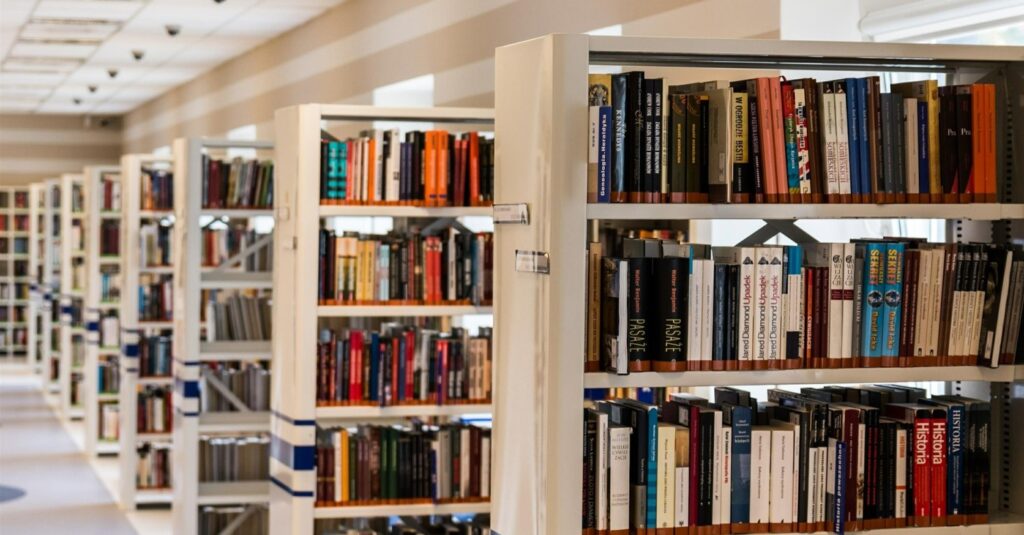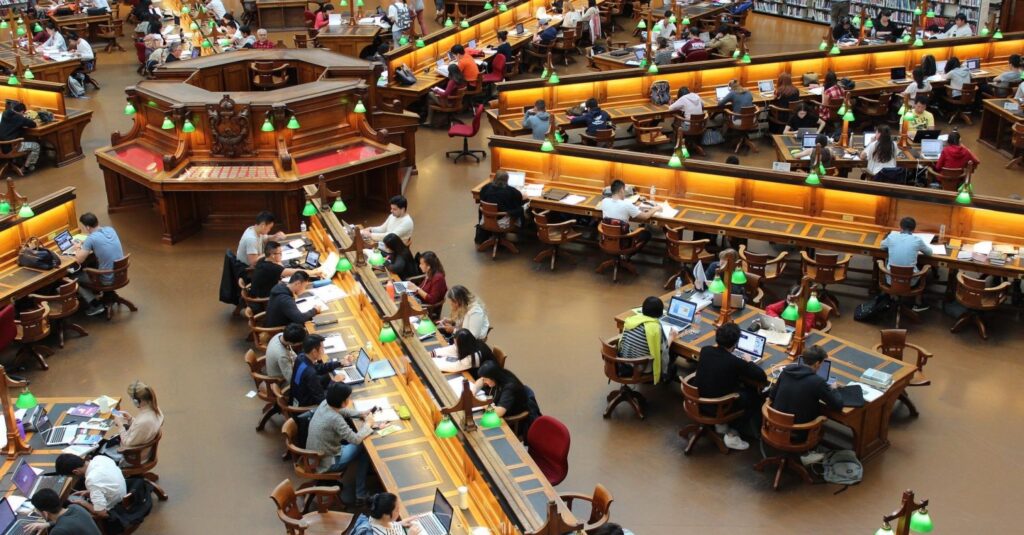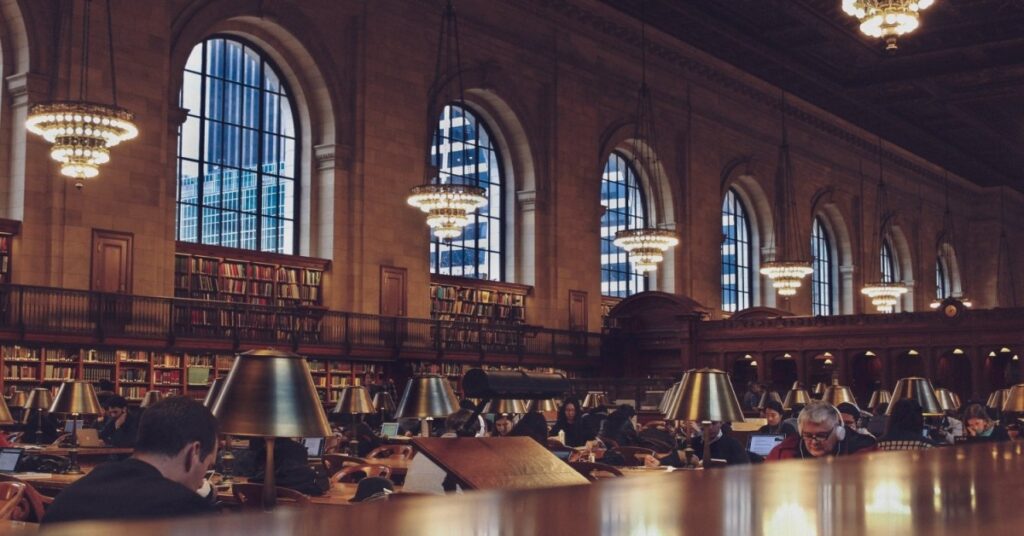
Why Get an MSW and an MEd?
Dual degree programs still represent a significant commitment, but those [...]

This website may earn a commission if you make a purchase after clicking on a product link in this article
Whether you’re considering entering the classroom for the first time or looking to improve your teaching practice, chances are, you’re aware of the long list of benefits that reading can provide educators with. One study from the journal Neurology shows that reading can slow the cognitive aging process—which makes reading, in a way, like taking your brain to the gym.
A study from the University of Toronto indicates that reading makes people more willing to be “left uncertain,” meaning, they avoid snap judgments and embrace ambiguous ideas more quickly. A study from Stanford University may prove one of the most obvious perks of reading, which is that it encourages you to use your brain.
Another benefit of reading that’s especially crucial for teachers is its effect on how they relate to others—students included. Study after study proves that reading impacts our sense of empathy by offering a portal into experiences and events that we wouldn’t encounter otherwise. As a teacher, showing compassion is essential to ensuring your students feel understood and supported, especially when their experience is wildly different than your own.
Reading is also crucial to helping teachers develop new skills to use in their work and stay up to date on trends in the field. While the environment or overall “mood” of any given classroom can change at the drop of a hat, a wealth of books have endeavored to draw together research and provide a collection of best practices on what might have the most significant impact on student behavior and learning.
If you’re interested in a range of educational subjects, these carefully-selected titles cover everything from the future of education and classroom diversity to creativity and student resilience. No matter where you work or how long you’ve been in the field, they’ll be sure to inspire and motivate you, push your thinking, and ignite—or rekindle—your love of teaching and learning.
Lisa Delpit, a MacArthur Fellow and Chair of Urban Educational Leadership at Georgia State University, uses her essay collection to shed light on the impact of power imbalances in the U.S.’s greater society on the conventional classroom. To do so, she provides excerpts of conversations with teachers, students, and parents from varied cultural backgrounds, showing readers the everyday assumptions made by educators and mainstream society about the capabilities, motivations, and integrity of low-income children and children of color.
In three parts, Delpit introduces ideas about the ways teachers can be better “cultural transmitters” in the classroom, where prejudice, stereotypes, and cultural assumptions breed ineffective education. She suggests that many academic problems attributed to children of color are the result of miscommunication, as primarily white teachers and “other people’s children” struggle with the imbalance of power and the dynamics impacting the educational system.
| University and Program Name | Learn More |
|
New York University:
Master of Arts in Teaching
|
|
|
Merrimack College:
Master of Education in Teacher Education
|
If anyone could understand the profound changes brought on by technology while simultaneously calming related anxieties and stoking hope for the future, it’s these authors. Brown, for one, is the former director of Xerox’s Palo Alto Research Center and a well-known futurist. Thomas is an associate professor at the Annenberg School for Communication and Journalism at the University of Southern California and an expert on the culture of computer gaming. Through their work, they’ve come to understand that learning in the twenty-first century is about embracing change.
Their 2011 book isn’t as much of a how-to guide as a resource for teachers and parents who want to understand what it means to learn and play in a world that is continually changing. Instead of wringing their hands over the supposed ills that children face on the internet, Thomas and Brown applaud the ways they learn through their online interactions. They also highlight the ways that virtual games and other forms of digital culture offer possibilities not only for imaginative play but also help children deal with the challenges of our world’s ever-shifting climate.
While the failings of schools have been discussed and analyzed from a dazzling array of perspectives, Howard Gardner, a professor at the School of Education at Harvard University and cognitive science expert, manages to take an innovative approach to it. Even the most successful students typically fail to exhibit “genuine understanding”—as opposed to “acceptable mastery”—of the materials and concepts taught to them, he writes. The core problem is that academic forms of knowing are often at odds with “the unschooled mind” within nearly every student.
Surveying a wide range of research on early learning and cognition, Gardner maintains that most children tend to develop deeply entrenched patterns of thinking and learning by the time they are five years old. When the child starts school, however, they’re introduced to forms of knowledge that often bypass and sometimes interfere with earlier frames of reference. The result for many young students is a fragile relationship between intuitive learning and academic learning. To this end, he argues that educators must acknowledge the many forms of intelligence that students bring to school while providing recommends for how to integrate these learning styles.
Historian, author, and University of Cambridge at Trinity College graduate Tara Westover insists that the central takeaway of her 2018 memoir is that “you can teach yourself anything better than someone else can teach it to you.” It’s a mindset that, in part, may stem from her rocky beginnings as the youngest of seven children, born to Mormon fundamentalist parents in rural Idaho. Her father acted as the family prophet, convinced the world was going to end the moment the millennium started. Her mother largely defers to her husband, despite evident doubts about his abilities as a prophet—and as a parent too.
It’s a life where money is a constant struggle, hospitals and western medicine are forbidden, and abuse from a sibling is routine. Despite not having a formal education, she manages to make her way out of her family’s small, grim, isolating world and study her way to college. She eventually earns her master’s degree as a Gates Cambridge Scholar and later, her Ph.D. In the course of her schooling and leaving her family, Westover writes, she found herself experiencing what some might call a “transformation” and others a “betrayal.” As she puts it in the last line of her book: “I call it an education.”
When it comes to systemic reform, it can be easy to feel as though there’s been little effort to create a solution for its problems of institutional neglect and racism in public education. Writer, educator, and activist Jonathan Kozol feels similarly, using his 1991 book to paint an emotional portrayal of how public education in the U.S. shuns so many of its students. His account weaves history and policy criticism with stories of his visits to urban public schools and conversations with their students, teachers, and administrators.
Despite a century of legislative action, Kozol argues, the U.S. maintains a separate and unequal public education system in which poor, primarily minority students, receive an education that is measurably different from that of their whiter, wealthier peers. One counter-argument he repeatedly addresses is the claim that urban students receive an “adequate” education and that more money is not the solution to the problems that may plague their schools.
Leaving aside questioning what “adequate” really means, Kozol takes readers inside dreary and decaying schools in cities like Chicago and East St. Louis, where students are predominantly black or Hispanic. In an equally bleak building in Cincinnati, he introduces readers to “white-blond” pupils from Appalachia, suggesting that even if racial barriers were to dissolve, class differences would still take a toll.
As a counterpoint, he visits the campuslike settings of public high schools in suburban Chicago and Rye, New York, where classroom resources are abundant, and every student seems destined for an Ivy League school. When highlighting the contrasts between worlds, Kozol urges readers to give undersupported students “something so spectacular, so wonderful and special” that they “might be able somehow to soar up above the hopelessness, the clouds of smoke and sense of degradation all around them.”
You may recognize Sir Ken from his uber-viral 2006 TED Talk titled, “Do Schools Kill Creativity?” His speech covers the gaps in the global educational system, the importance of creativity, and the importance of considering multiple types of intelligence when creating an educational environment in which all students can thrive. In his 2001 book, he creates a similar case for why we need creative solutions more than ever—and how education is one of the main culprits in a system that denies us access to our creative capabilities.
“Education is not a linear process of preparation for the future:” he writes. “it is about cultivating the talents and sensibilities through which we can live our best lives in the present and create the best futures for us all.” From one chapter to the next, Robinson stresses that due to rapid societal change, “civilization is a race between education and catastrophe” and that the world needs to rethink its approach to education to produce the thoughtful, creative, self-confident people it so urgently needs.
In his time, John Goodlad’s focused on work as an educational researcher, theorist, and dean of the Graduate School of Education at the University of California- Los Angeles—so you could say he knew a thing or two about education. First published over three decades ago, this 1984 part-book, part-research report is based on a four-year study of 38 elementary, middle, and high schools in 13 communities.
Overall, his book makes a case for why significant improvements must be made in schools, beginning with the premise that schools must be redesigned “piece by piece.” His most powerful lesson is that schools should be active promoters of morality, not only serve a vehicle for training students to perform at a certain skill level. “The most controversial issues of the twenty-first century will pertain to the ends and means of modifying human behavior and who shall determine them,” he writes. “The first educational question will not be ‘what knowledge is of the most worth?’ but ‘what kinds of human beings do we wish to produce?'”
Questions or feedback? Email editor@noodle.com

Dual degree programs still represent a significant commitment, but those [...]

all LIS professionals must be information-literate. They can work in [...]

Elective courses can customize your MLIS degree to a career [...]

Do you intend to work in your community's public library [...]

For decades now, libraries have been attuned to new developments [...]
Categorized as: Teaching, Education & Teaching